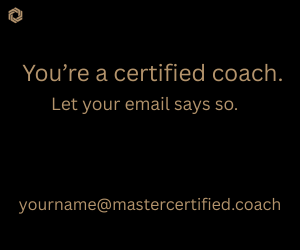There are 53,300 professional coaches worldwide who generate $2.356 billion U.S. dollar in revenue globally (2016 ICF Global Coaching Study), and that number is growing rapidly. As the profession continues to grow, the issue of effectiveness and return on investment (ROI) is likely to become more important for coaches. In fact, when it comes to measuring the success of coaching, no metric is more important to top executives than the ROI. Investing in people is not the same as investing in a piece of equipment or any other tangible capital. For one thing, measuring the return on investment in a person is a bit more difficult than, say, measuring the increase in the number of product produced per hour by the new machine that has just been installed in the factory.
ICF-supported studies have indicated that almost all organizations state that they “know” coaching has been effective, but the evidence to support this is mostly anecdotal. Measuring the success of coaching was considered to be a challenge, and the methods used varied among the organizations. For the most part, coaching is measured at the performance level— “Changes in behavior” using 360-degree feedback programs and employee engagement/satisfaction surveys that could be linked back to those who had received coaching. But, most of these tools were readily available in the organization and were not designed specifically to measure the impact of coaching. Coaching professionals are not able to show the Value of coaching programs and justify coaching spend to their executives.
These top executive expectations are a challenge for coaching professionals and talent development professionals. The good news is that they can now meet these challenges with limited resources. Most organizations have the available resources to make it work. ROI Institute has developed a 10 easy steps for evaluating and measuring the value of coaching initiatives; the collective is called “ROI Methodology.” The ROI Methodology is the most widely used process to account for non-capital investments, but, more importantly, it is an approach to accountability through which program owners gather data that can be used to improve their processes as well. The 10 steps are as follow:
Step 1: Develop/Revise Coaching Objectives
Coaching objectives are developed based on needs:
- The needs assessment begins with a review of the opportunity to be realized if the proposed coaching is implemented.
- Next, the business needs are identified. The business needs are met by changing individual performance.
- Performance needs are met by implementing new knowledge/skills presented to the coachees.
- Finally, preference needs focus on how the stakeholders, including the coachees, should perceive the coaching in terms of value and need.
The coaching is developed to achieve the objectives at each level. The coaching can be evaluated at each level, based on the objectives.
Step 2: Plan for Coaching Evaluation
Planning begins as soon as it is decided that an impact study should be conducted and typically involves key stakeholders.
Step 3: Collect Data during Coaching Implementation
Two types of data are collected during a coaching program’s implementation “Reaction data” and “Learning data.”
Step 4: Collect Data after Coaching Implementation
Two types of data are collected after coaching program’s implementation “Application data” and “Impact data.”
Step 5: Isolate the Coaching Effects
While we believe coaching can have a considerable influence on business results, other factors obviously have an impact and are always present and without isolation, there is only evidence, not proof of coaching value.
Step 6: Convert data to monetary value
This step develops a monetary benefit for one or more impact measures linked to the coaching.
Step 7: Identify Intangible Benefits
Intangible benefits are those benefits that we choose not to convert to monetary value. They are measures that cannot be converted to money credibly with minimal resources. Typical intangible benefits are job satisfaction, organizational commitment, teamwork, etc.
Step 8: Tabulate the Costs
The total fully loaded costs of coaching program are needed for the ROI calculation.
Step 9: Calculating the ROI
The return on investment calculation considers the net benefits divided by coaching costs.
Step 10: Generate Report
Reporting the results of the study is an important final step in the ROI Methodology. Properly identifying the audience and providing appropriate information is essential. By default, four audiences are always essential: the coaches, the immediate managers of the coaches, the sponsors of the coaching program, and the staff team members.
In the future, more and more coaching professionals will be asked for the ROI on coaching expenditures. While challenging to calculate, it will be critical that monetary values be assigned to results in order to measure this investment in an organization’s most important capital “its people.”
Disclaimer
The views and opinions expressed in guest posts featured on this blog are those of the author and do not necessarily reflect the opinions and views of the International Coach Federation (ICF). The publication of a guest post on the ICF Blog does not equate to an ICF endorsement or guarantee of the products or services provided by the author.
Additionally, for the purpose of full disclosure and as a disclaimer of liability, this content was possibly generated using the assistance of an AI program. Its contents, either in whole or in part, have been reviewed and revised by a human. Nevertheless, the reader/user is responsible for verifying the information presented and should not rely upon this article or post as providing any specific professional advice or counsel. Its contents are provided “as is,” and ICF makes no representations or warranties as to its accuracy or completeness and to the fullest extent permitted by applicable law specifically disclaims any and all liability for any damages or injuries resulting from use of or reliance thereupon.
Authors
Post Type
Blog
Audience Type
Coach Educators, Experienced Coaches, External Coaches, ICF Chapter Leaders, Internal Coaches, New Coaches, Professional Coaches, Team and Group Coaches
Topic
Coaching Toolbox, Discover - Your Coaching Career
Related Posts
The Coaching Trap: When Empathy Becomes Exhaustion
Prepare yourself for the fact that this will not be about you…
Your Guide to Preparing for the ACC Exam
Much like a smartphone upgrade that introduces improvements for a smoother user…
How Coaching Is Driving Inclusion Around the Globe: Lessons from Local ICF Chapters
When a group of mothers in Kazakhstan, many of whom had never…








